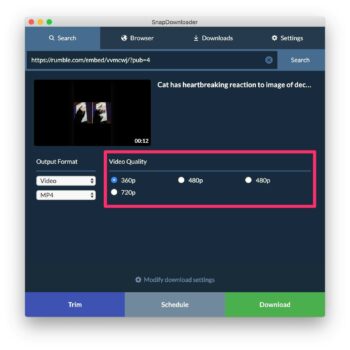1. Introduction:
Selecting the perfect camera for stock photography on Alamy is essential for capturing high-quality image that meet the platform's standards and maximize your chances of success. The right equipment can significantly impact the quality, resolution, and overall appeal of your photographs, making it crucial to find the ideal camera for your stock photography endeavors on Alamy.
In this discussion, we will explore the factors to consider when choosing a camera for Alamy and highlight the importance of finding equipment that aligns with the platform's image quality requirements. By understanding these considerations, you can make an informed decision and invest in a camera that suits your specific needs, enhances your photography skills, and produces images that meet Alamy's standards.
Also Read This: Extract Thumbnail from Video on Likee in Minutes
2. Understanding Alamy's Image Quality Requirements:

To maintain the integrity and professional quality of their image collection, Alamy has established specific image quality requirements that photographers must meet when submitting their work. Understanding these requirements is crucial when selecting a camera for Alamy stock photography.
Alamy's image quality standards and guidelines are designed to ensure that images on their platform are of the highest standard. They expect images to be visually appealing, well-composed, and free from technical flaws such as noise, artifacts, or excessive manipulation. Photographers are encouraged to submit images that are sharp, properly exposed, and accurately represent the intended subject.
In terms of technical specifications, Alamy recommends a minimum resolution of 24 megapixels for new cameras. This ensures sufficient detail and flexibility in image usage, allowing for various purposes, including print publications. However, Alamy does accept images from cameras with lower resolutions as long as they meet their quality standards.
Additionally, color accuracy is essential. Alamy expects images to have accurate colors that faithfully represent the original scene or subject. Photographers are encouraged to shoot in a color profile that ensures accurate color reproduction and to calibrate their monitors for consistent color management.
Proper file formats are also important. Images should be saved in appropriate formats such as JPEG, TIFF, or RAW, maintaining high-quality compression and retaining as much image data as possible.
Metadata plays a vital role as well. Images should have comprehensive and accurate metadata, including relevant keywords, descriptions, and captions. This helps potential buyers discover and understand the context and content of the images.
Meeting Alamy's image quality requirements is crucial for successful submissions and attracting potential buyers. By understanding these guidelines, photographers can choose a camera that is capable of capturing high-quality images that align with Alamy's standards, increasing their chances of success in the stock photography industry.
Also Read This: Top Trending Skills on Linkedin
3. Considerations for Camera Selection:
Choosing the right camera for Alamy stock photography requires careful consideration of several factors. These considerations will help ensure that your camera is capable of capturing high-quality images that meet Alamy's standards and maximize your potential for success.
A. Image Sensor Size and Megapixel Count:
The size of the camera's image sensor and its megapixel count are essential factors to consider. A larger sensor size typically allows for better image quality, especially in low-light conditions. Higher megapixel counts result in images with more detail and resolution, providing flexibility in cropping and resizing.
B. Lens Compatibility and Quality:
Consider the compatibility of the camera with different lens mounts and brands. Having a wide range of lens options available can enhance your creative possibilities. Additionally, investing in high-quality lenses is crucial for achieving sharp and detailed images.
C. ISO Range and Low-Light Performance:
Evaluate the camera's ISO range and low-light performance. A wider ISO range allows for better sensitivity to light, enabling you to capture well-exposed images even in challenging lighting conditions. Cameras with good low-light performance minimize noise and produce cleaner images in low-light environments.
D. Dynamic Range and Exposure Control:
Consider the camera's dynamic range, which refers to its ability to capture details in both highlights and shadows. Cameras with a wider dynamic range produce images with more balanced exposures and greater tonal range. Adequate exposure control capabilities also contribute to achieving well-exposed images.
E. Image Stabilization and Handling:
Image stabilization is valuable for handheld shooting, reducing the likelihood of blurry images caused by camera shake. Consider whether the camera has built-in image stabilization or if it is available in the lenses. Additionally, evaluate the ergonomics and user-friendliness of the camera for comfortable and efficient shooting.
Considering these factors when selecting a camera for Alamy stock photography will help ensure that your equipment is well-suited to capture high-quality images that meet Alamy's standards. By choosing a camera that excels in areas such as sensor size, lens compatibility, low-light performance, exposure control, and image stabilization, you can elevate your photography and enhance your chances of success on the platform.
Also Read This: Trending Keywords on Getty Images: Insights into Current Market Demand and Emerging Themes
4. Additional Features and Considerations:
In addition to the core considerations of image quality, there are several additional features and factors to evaluate when selecting a camera for Alamy stock photography. These features can enhance your workflow efficiency and contribute to the overall success of your photography endeavors.
A. File Formats and RAW Capabilities:
Consider whether the camera supports shooting in RAW format. RAW files retain more image data, providing greater flexibility for post-processing and adjustments. Having the ability to capture images in RAW format ensures that you can maximize the potential of your shots and achieve optimal image quality.
B. Connectivity Options and Workflow Efficiency:
Assess the camera's connectivity features, such as Wi-Fi or Bluetooth capabilities. These features allow for seamless image transfer to your computer or mobile device, facilitating a more efficient workflow. Compatibility with Alamy's submission process and workflow can also streamline the image upload process.
C. Battery Life and Reliability:
Evaluate the camera's battery life and reliability. A camera with a longer battery life ensures that you can capture images for extended periods without interruption. Reliability and durability are crucial for long-term usage, particularly when engaging in frequent photography sessions or outdoor shoots.
Considering these additional features and considerations will help optimize your workflow and enhance the overall efficiency of your stock photography on Alamy. The ability to shoot in RAW format, seamless connectivity options, and reliable battery performance contribute to a smoother and more productive photography experience.
By evaluating these factors alongside the core considerations of image quality, lens compatibility, low-light performance, exposure control, and image stabilization, you can select a camera that aligns with your specific needs and maximizes your potential for success on Alamy.
My recommendations: "we need to refactor, update and maintain our codebase, it's getting unwieldy from all the additional features being thrown in without design considerations"
What actually ends up happening: Let's add more features. I mean its working right, no maintenance.— Xiox (@Xiox047) February 4, 2022
Also Read This: Can Behance Be Used for Video Editing? Everything You Need to Know
5. Budget Considerations and Recommendations:
Budget is an important factor to consider when choosing a camera for Alamy stock photography. While there are cameras available at various price points, it is essential to strike a balance between affordability and the features needed to meet Alamy's image quality requirements.
A. Determining a suitable budget for the camera investment:
Consider your budget and determine the amount you are willing to invest in a camera for your stock photography journey. It's important to have a clear understanding of your financial limitations and set a budget that aligns with your resources.
B. Exploring camera options within different price ranges:
Research and explore camera options within your budget range. Take advantage of online resources, reviews, and comparisons to identify cameras that offer the best value for your investment. Consider both new and used camera options to find a balance between affordability and desired features.
C. Recommendations based on budget and specific requirements:
Recommendations can vary based on individual needs and preferences. However, some camera models are known for offering a good balance of affordability and performance. Consider popular options such as entry-level DSLRs or mirrorless cameras that offer strong image quality, versatility, and user-friendly features.
It is important to note that while budget is a consideration, investing in a camera that meets Alamy's image quality requirements is crucial for long-term success. Saving up or considering financing options to obtain a camera with the necessary features can be a worthwhile investment in your stock photography journey.
Ultimately, the goal is to find a camera that provides the desired image quality, performance, and reliability within your budget constraints. Carefully evaluate your needs, research available options, and consider recommendations from trusted sources to make an informed decision that aligns with both your budget and your goals as an Alamy stock photographer.
Also Read This: Flicker Streaming Site – An Overview for Enthusiasts
FAQ:
1. What is the best camera for stock photography?
There is no one-size-fits-all answer to this question, as the best camera for stock photography will vary depending on your specific needs and budget. However, some factors to consider when choosing a camera for stock photography include:
- The type of photography you want to do: If you are interested in shooting landscapes, you will need a different camera than if you are interested in shooting portraits.
- The quality of the images you want to produce: If you want to produce high-quality images, you will need a camera with a good sensor and lens.
- Your budget: Cameras can range in price from a few hundred dollars to several thousand dollars.
Some popular cameras for stock photography include:
- Canon EOS 5D Mark IV: This full-frame DSLR camera is a good choice for photographers who want to produce high-quality images.
- Nikon D850: This full-frame DSLR camera is another good option for photographers who want to produce high-quality images.
- Sony A7R III: This full-frame mirrorless camera is a good choice for photographers who want a lightweight and portable camera.
- Fujifilm X-T3: This APS-C mirrorless camera is a good choice for photographers who want a camera with good image quality and a fast autofocus system.
2. What are the most important features to look for in a camera for stock photography?
The most important features to look for in a camera for stock photography include:
- Image quality: The camera should be able to produce high-quality images with good resolution and dynamic range.
- Autofocus system: The camera should have a fast and accurate autofocus system, especially if you are shooting moving subjects.
- Lens selection: The camera should have a good selection of lenses to choose from, so you can capture a variety of subjects.
- Build quality: The camera should be well-built and durable, as you will be using it in a variety of conditions.
- Ergonomics: The camera should be comfortable to hold and use, as you will be spending a lot of time shooting with it.
3. What are some of the benefits of using a DSLR camera for stock photography?
DSLR cameras offer a number of benefits for stock photography, including:
- Large sensor: DSLR cameras have large sensors, which give them better image quality than smaller sensor cameras.
- Interchangeable lenses: DSLR cameras have interchangeable lenses, which gives you more flexibility in terms of the type of images you can capture.
- Manual controls: DSLR cameras give you more control over the exposure and other settings, which can be helpful for achieving the desired look in your images.
4. What are some of the benefits of using a mirrorless camera for stock photography?
Mirrorless cameras offer a number of benefits for stock photography, including:
- Smaller and lighter: Mirrorless cameras are smaller and lighter than DSLR cameras, which makes them more portable.
- Faster autofocus: Mirrorless cameras often have faster autofocus systems than DSLR cameras.
- Electronic viewfinder: Mirrorless cameras have electronic viewfinders, which can be helpful for composing images and checking exposure.
5. What are some of the drawbacks of using a DSLR camera for stock photography?
DSLR cameras have a few drawbacks for stock photography, including:
- Size and weight: DSLR cameras can be larger and heavier than mirrorless cameras, which can be a drawback if you need to travel light.
- Viewfinder blackout: When you take a picture with a DSLR camera, the viewfinder goes black for a moment as the shutter opens and closes. This can be a drawback if you are shooting moving subjects.
- Battery life: DSLR cameras tend to have shorter battery life than mirrorless cameras.
Conclusion:
Selecting the perfect camera for Alamy stock photography requires careful consideration of various factors. Understanding Alamy's image quality requirements is crucial in ensuring that the camera you choose is capable of capturing high-quality images that meet the platform's standards.
Considerations such as image sensor size, megapixel count, lens compatibility and quality, ISO range, low-light performance, dynamic range, exposure control, image stabilization, and additional features like file formats and connectivity options play a significant role in determining the suitability of a camera for Alamy.
While budget considerations are important, it is crucial to strike a balance between affordability and the necessary features to meet Alamy's image quality requirements. Researching and exploring camera options within your budget range, considering both new and used models, and seeking recommendations from trusted sources can help guide your decision.
Investing in a camera that meets Alamy's image quality requirements is essential for long-term success in stock photography. Finding the ideal equipment will enhance your ability to capture high-quality images, attract potential buyers, and maximize your potential on the Alamy platform.
By carefully considering the factors outlined and aligning your budget with the desired features, you can confidently choose the perfect camera for Alamy stock photography and embark on a successful journey as a stock photographer.














